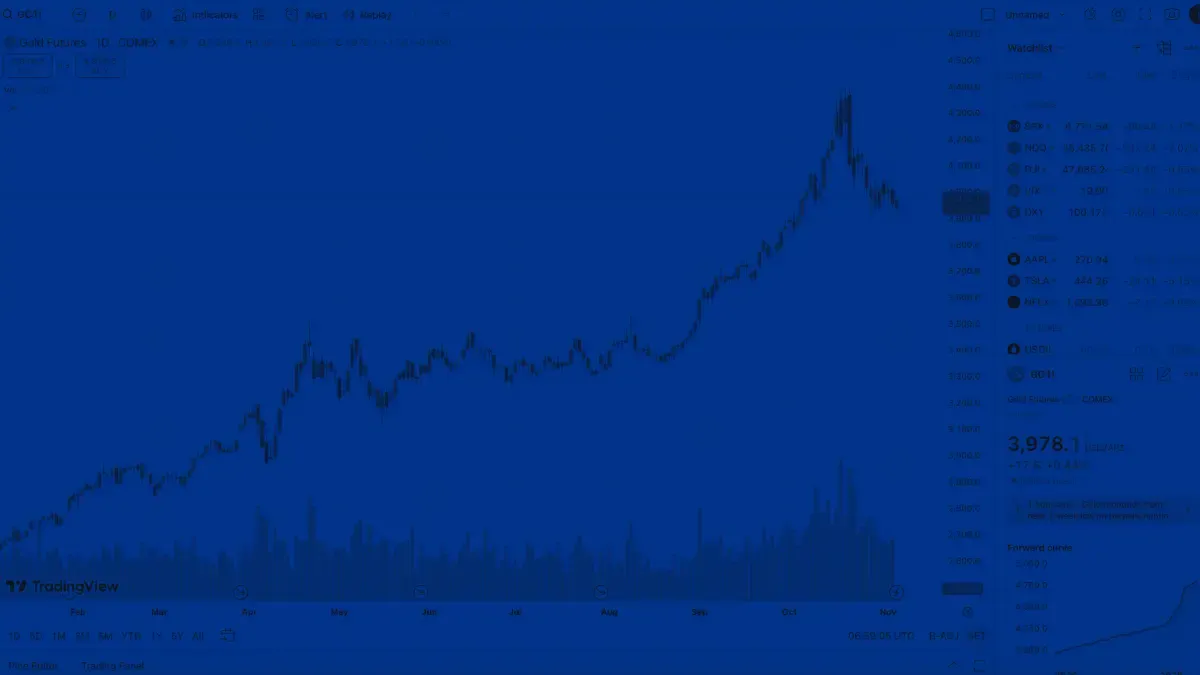Substantial capital access without hefty personal investment---this core promise attracts traders to futures prop firms. Yet the quality gap between industry leaders and subpar operators continues to widen, making selection processes increasingly consequential to long-term trading success.
The Capital Foundation: Structure Determines Potential
Capital structure forms the bedrock of any worthwhile trading partnership. This extends beyond mere account size into how the capital framework either amplifies or restricts established trading methodologies.
The best prop firms design their capital structures with a thoughtful balance between risk management and trading freedom. They offer account sizes ranging from $25,000 to $250,000 with corresponding risk parameters that scale proportionally rather than arbitrarily. Daily drawdown limits typically range from 2-5% of account value, while maximum drawdowns generally fall between 6-12%.
Contract allowances reveal much about a firm's understanding of proper position sizing. Quality providers permit sufficient contracts to execute strategies properly---typically 3-5 minis per $50K of capital---while preventing the excessive leverage that undermines long-term sustainability.
The most revealing capital structure element? Drawdown calculation methodology. Advanced futures prop firm operations implement sophisticated trailing mechanisms that protect capital while rewarding consistent performance. Static drawdown models, by contrast, often signal rudimentary risk frameworks unsuited to market realities.
Economics of Prop Trading: Beyond Surface Terms
Analysis of fee structures across twenty leading reputable prop firms reveals clear patterns separating optimization models. The evaluation fee-to-capital ratio provides the first metric---industry leaders typically maintain ratios between 0.2-0.4% (a $100 evaluation for a $50,000 account represents a 0.2% ratio).
More telling than initial costs are the reset policies following near misses. Market-leading organizations typically offer:
-
Discounted resets (40-60% of original fee)
-
Free retry opportunities for traders who breach limits by narrow margins
-
Extended evaluation windows rather than strict time cutoffs
Profit distribution reveals the most about a firm's fundamental orientation. While the 80/20 split (trader/firm) remains the industry standard, structural details matter significantly:
The best futures prop firms implement clean profit calculations without hidden deductions. They establish reasonable withdrawal minimums ($100-250) with weekly or bi-weekly payout frequencies. Most importantly, they maintain withdrawal reliability---the area where industry complaints concentrate most heavily.
Trading Parameters: The Operational Framework

The rules governing trading activity define the practical experience with any prop trading partnership. Examination of multiple evaluation frameworks reveals a rule structure spectrum ranging from suffocating micromanagement to dangerous permissiveness.
Time requirements provide immediate insight into a firm's evaluation philosophy. Quality operations balance minimum activity thresholds (ensuring statistical validity) without forcing artificial trading frequency. Typical frameworks include:
-
Minimum trading days (5-10 days per evaluation)
-
Maximum completion windows (typically unlimited or 30-60 days)
-
Restricted trading periods (economic releases, weekend sessions)
Strategic restrictions reveal deeper operational understanding. The best prop firms for futures implement rules preventing manipulation while permitting legitimate methodologies. They distinguish between scalping (legitimate) and exploitative latency arbitrage. They create reasonable guidelines around news trading rather than blanket prohibitions.
Consistency requirements deserve particular scrutiny. While promoting sustainable approaches, these metrics often inadvertently penalize valid trading styles. Question whether requirements align with market realities---is a 3:1 profit-to-loss ratio achievable in your strategy? Does the maximum daily profit percentage (40-50% typically) accommodate your established performance patterns?
Technology Ecosystem: The Execution Foundation
Technology infrastructure creates the most significant operational variability across futures prop firms. This ecosystem encompasses three critical elements:
First, platform compatibility determines workflow integration. Industry leaders support major platforms (NinjaTrader, TradeStation, Tradovate) with full functionality rather than stripped-down implementations. They provide multiple platform options recognizing trader specialization rather than forcing adaptation.
Second, data feed quality dramatically impacts execution quality. Professional-grade feeds from recognized providers (CQG, Rithmic, dxFeed) offer depth of market visibility and millisecond-level accuracy. Substandard feeds introduce latency that undermines precise execution---particularly problematic for short-timeframe traders.
Third, order routing infrastructure determines slippage profiles. Reputable prop firms invest in direct market access systems, minimizing execution delays. They establish relationships with quality futures commission merchants rather than routing through discount intermediaries. They maintain transparency around execution metrics rather than concealing slippage realities.
Developmental Infrastructure: Beyond Capital Access

The support ecosystem surrounding a futures prop firm often distinguishes temporary partnerships from career-defining relationships. Quality firms recognize that trader development drives mutual profitability.
Support accessibility forms the operational baseline---responsive assistance during trading hours prevents unnecessary losses. The best organizations maintain:
-
Live chat with knowledgeable staff (not outsourced generalists)
-
Response time standards (typically under 10 minutes during market hours)
-
Dedicated account managers for funded traders
-
Emergency protocols for platform issues
Educational resources signal whether firms view traders as disposable evaluation revenue or valuable long-term partners. Industry leaders provide substantive education:
-
Strategy adaptation frameworks for evaluation environments
-
Platform optimization techniques
-
Regular market analysis from experienced traders
-
Risk management templates tailored to firm parameters
Community engagement completes the development ecosystem. Active trader communities facilitate knowledge transfer that accelerates performance improvement. Look for moderated discussion channels, regular webinar programs, and transparent information sharing rather than hype-driven promotional environments.
Operational Integrity: The Foundation of Trust
Industry observation of multiple prop trading firm implosions over the past decade makes operational integrity indicators increasingly relevant. These metrics help distinguish between sustainable operations and unsustainable models regardless of surface attractiveness.
Payment track record provides the most unambiguous integrity signal. Consistent withdrawal fulfillment without delays or excuses forms the non-negotiable foundation of any worthwhile partnership. Verify through:
-
Specific trader testimonials (with verifiable details)
-
Third-party review authentication
-
Public payment documentation
-
Absence of significant complaint patterns
Regulatory posture reveals operational maturity despite the evolving regulatory landscape. While best futures prop firms operate within legal frameworks, approaches vary significantly. Some establish clear regulatory relationships, others implement careful jurisdictional restrictions, while some operate through offshore structures with questionable oversight.
Communication transparency completes the integrity picture. Firms with long-term viability maintain:
-
Clear notice periods for rule modifications
-
Explicit explanations for policy changes
-
Consistent enforcement standards
-
Accessible leadership
Selection Methodology: Matching a Firm to Trading DNA

Systematic approaches to identifying optimal futures prop firm partnerships yield superior outcomes. The selection process should begin with a strategic compatibility analysis.
Document trading approach characteristics:
-
Average trade duration
-
Typical profit per trade relative to account size
-
Historical drawdown patterns
-
Primary trading sessions and instruments
Compare these patterns against prospective firm parameters, identifying structural conflicts before committing resources.
Next, evaluate scaling trajectories---particularly for advancing traders. Examine:
-
Account size progression options
-
Contract allowance increases with demonstrated performance
-
Multi-account management possibilities
-
Capital merging opportunities
Complete a comprehensive economic assessment beyond headline evaluation costs. Calculate total investment including:
-
Initial evaluation fees
-
Realistic reset probability and costs
-
Ongoing subscription expenses, if applicable
-
Effective profit split including all deductions
Finally, conduct thorough reputation research focusing on operational experiences rather than marketing claims. Differentiate between legitimate complaints and evaluation failures. Prioritize withdrawal reliability reports over other factors given their fundamental importance.
This methodical approach identifies partnerships aligned with specific trading characteristics rather than merely pursuing the most generous surface terms.
Building a Career with the Right Futures Prop Trading Foundation
Your selection of the best futures prop firm should reflect your specific trading methodology, capital constraints, and development objectives. Through careful evaluation of capital structures, rule frameworks, and technological infrastructure, you can identify partners that complement rather than conflict with your approach.
The ideal futures prop firm relationship balances risk protection with trading freedom---firms like MyFundedFutures exemplify this through thoughtful account options ($50K-$150K ranges), favorable profit distributions (100% of first $10,000, then 90/10), and growth-oriented programs like their Evaluation-to-Live pathway providing funding futures for traders based on demonstrated performance.
Conduct proper operational due diligence before committing resources. The right partnership amplifies trading potential; the wrong one creates unnecessary friction and frustration.
Ready to dive in?
Explore our challenge accounts, pick the one that fits you best, and start your journey to getting funded.
Explore AccountsThis material is provided for educational purposes only and should not be relied upon as trading, investment, tax, or legal advice. All participation in MyFundedFutures (MFFU) programs is conducted in a simulated environment only; no actual futures trading takes place. Performance in simulated accounts is not indicative of future results, and there is no guarantee of profits or success. Fewer than 1% of participants progress to a live-capital stage with an affiliated proprietary trading firm. Participation is at all times subject to the Simulated Trader Agreement and program rules.
Frequently Asked Questions
Rate this article
Related Posts
Read our most popular posts
Which Prop Firms Offer Daily Payouts and How Do They Work?
Daily payout prop firms let traders withdraw profits far more frequently than traditional models, sometimes even from the very first funded day. Instead of waiting weeks for a payout cycle, traders can request withdrawals every day, subject to rules on drawdown, buffers, and minimum amounts. This guide explains how daily payout structures work, which futures prop firms are known for fast withdrawals, what to watch out for in the fine print, and how MyFundedFutures’ Rapid plan fits into this newer payout landscape.
5 Best Prop Firms With TradingView Integration
TradingView's powerful charting tools and real-time data make it a favorite among futures traders, but not every prop firm lets you trade directly from your charts. We've identified five firms that offer true TradingView integration, making it easy to analyze, execute, and scale without switching platforms.
What Is MyFundedFutures Scale Account and Is It The Right Plan For You?
The MyFundedFutures Scale Account is a middle-tier evaluation plan that balances affordability with growth potential. The scale plan offers weekly payout opportunities with increasing withdrawal limits, no daily loss cap, and a clear path to live funding after just five consecutive payouts.


